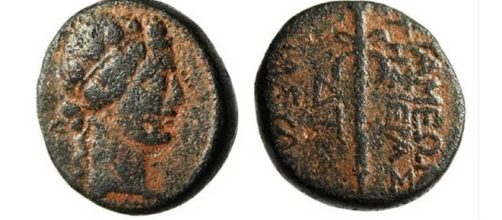ISIS makes hundreds of millions of dollars by smuggling stolen Syrian and Iraqi antiquities to Western countries ever since it took control over vast areas of Syria and Iraq. Both of these countries are full of archaeological sites and museums because great civilizations like the Assyrians and Babylonians lived there. According to an article in “The Washington Diplomat” three weeks ago, many of these archaeological sites like Palmyra are included in UNESCO’s World Heritage List.
This article is applicable to all antiquities looted by ISIS, however, it concentrates on looted coins since this is the specialization of the author.
ISIS partly funded from looted antiquities
As soon as the so-called “Islamic State” took control of these areas, its militants started looting and destroying priceless ancient artifacts like coins, mosaics, and statues.
According to the Russian Ambassador to the United Nations, a 2016 estimate has revealed that ISIS makes between $150-$200 million per year by smuggling looted Syrian antiquities to the West.
Back in December 2016, the United States government issued a similar statement in an effort to inform people and urged them to avoid buying them since many collectors unknowingly buy them and indirectly finance terrorism. The author of this article does not wish to make any comment about those who knowingly buy them.
Readers can draw their own conclusions about the morality of their actions.
Looted ancient coins are the biggest problem
Looted ancient coins are much easier to smuggle because unlike an ancient statue or mosaic, they are not bulky items. This makes the smugglers’ job much easier because they can be easily hidden and moved to Western countries.
Additionally, the vast majority of ancient Syrian coins are not unique and it is almost impossible to identify one that was looted by ISIS. The case is many times not the same with other stolen antiquities. Many of the looted statues, mosaics, and other antiquities are unique and have been documented and photographed long before ISIS looted them.
This makes it much easier for authorities to spot them.
An insufficient legislation
According to the “New York Times,” officials and experts in antiquities trafficking believe that ISIS takes advantage of a broken system and profits from the sale of looted artifacts. Legislation all over the world is inconsistent and very weak. Customs officers can screen only a small portion of what goes through international borders.
According to the “Daily Mail,” many of the looted antiquities, especially coins, end up being sold at well-known websites since ISIS and its smugglers and resellers take advantage of the insufficient legislation and broken system.
Thus, since authorities are unable to stop the antiquities trafficking, it is up to honest collectors to find ways to avoid buying them.
How honest collectors can avoid buying looted coins
Fortunately, collectors who do not wish to indirectly finance ISIS and its Terrorist Activities have a way to avoid it. This is called Provenance. This is a document that describes the “pedigree” of a coin. It lists all previous owners of the coin and can include details like when, where and in which auctions a coin was sold. Thus, if you are a collector who is in doubt about an ancient coin from the Middle East, always ask for the Provenance. This is the best way to ensure that a coin was not illegally smuggled by ISIS. This way, you will have a clear conscience that the money you spent on it will not be used to sponsor ISIS’ terrorist activities.


